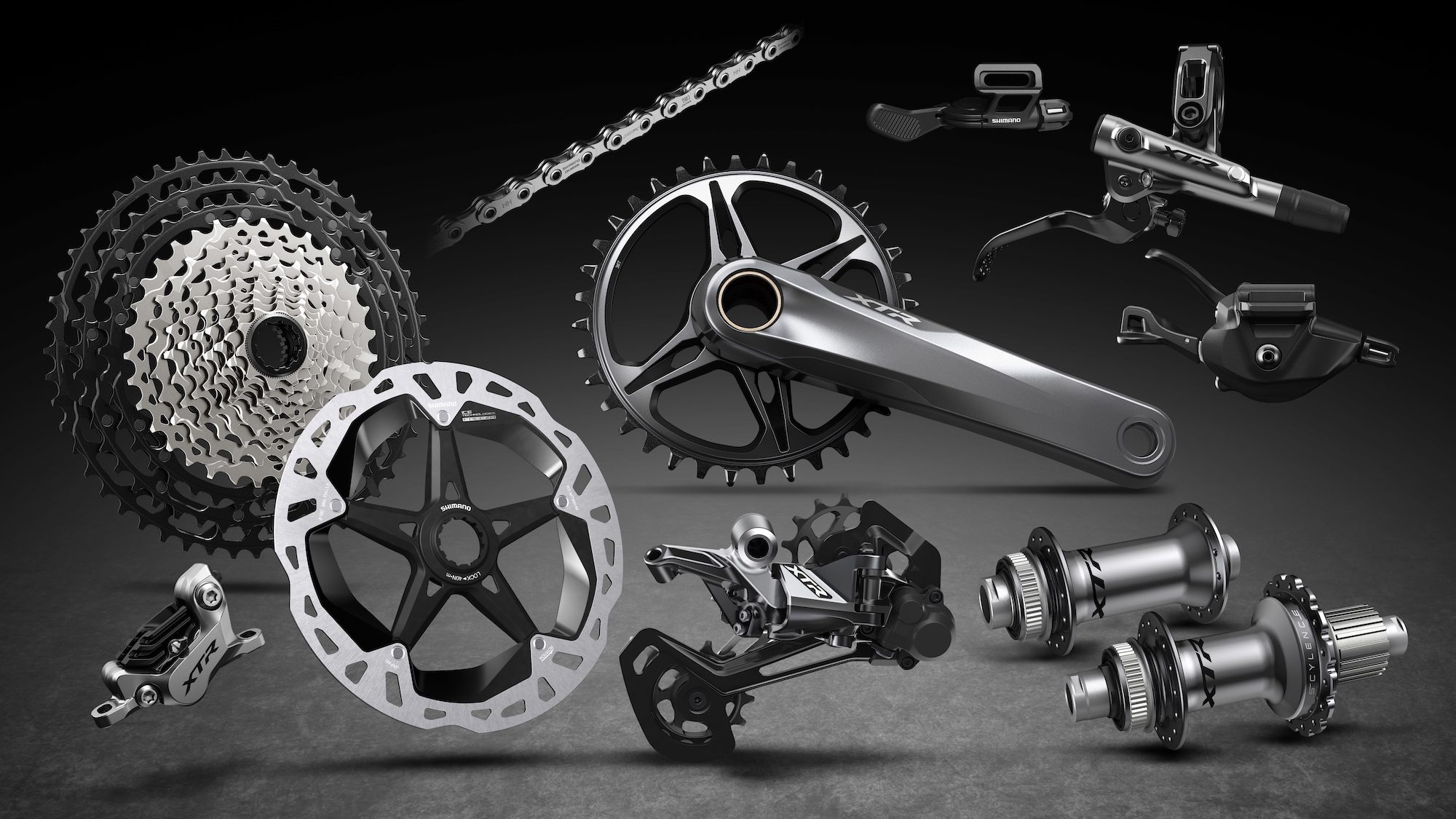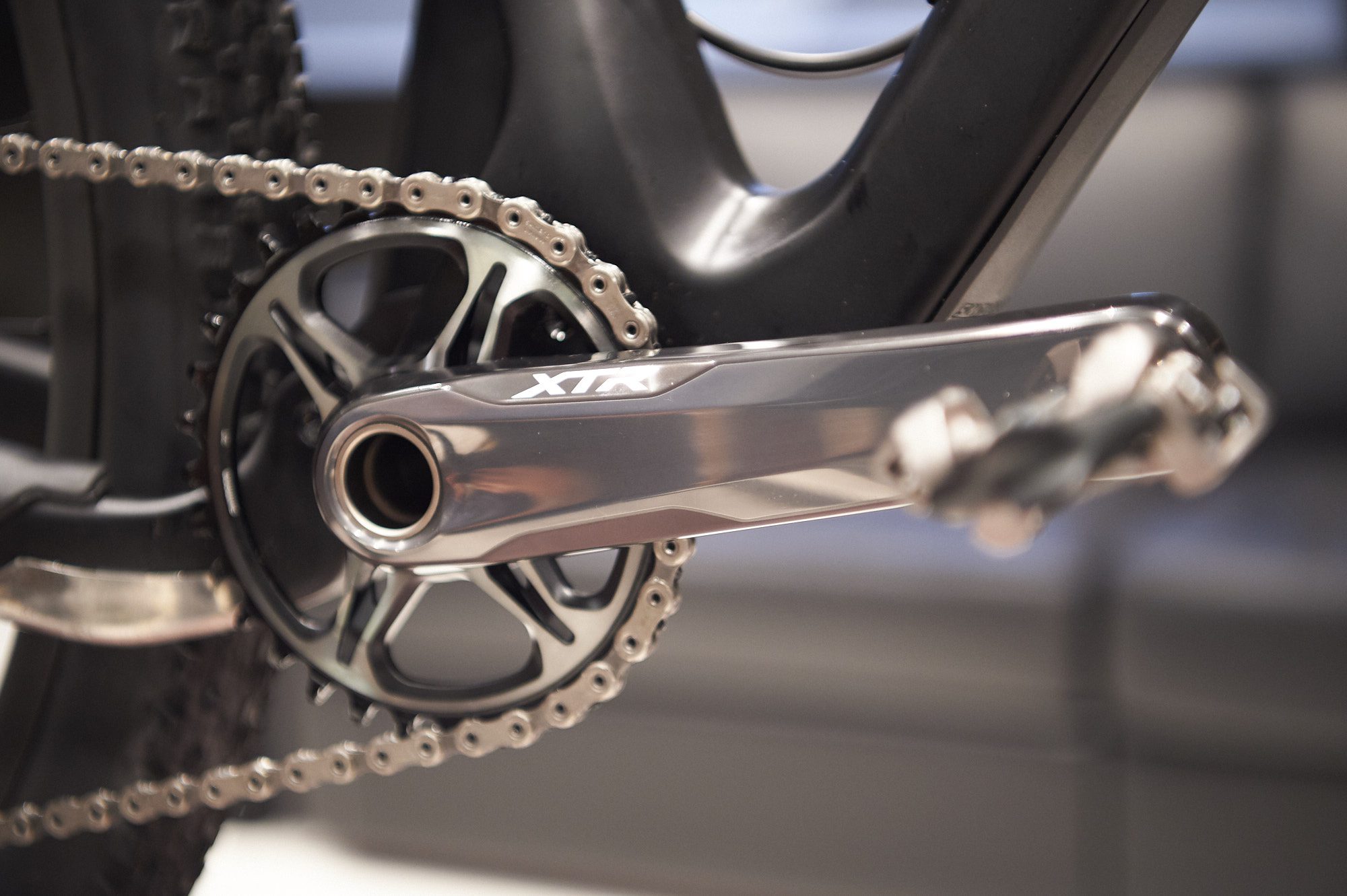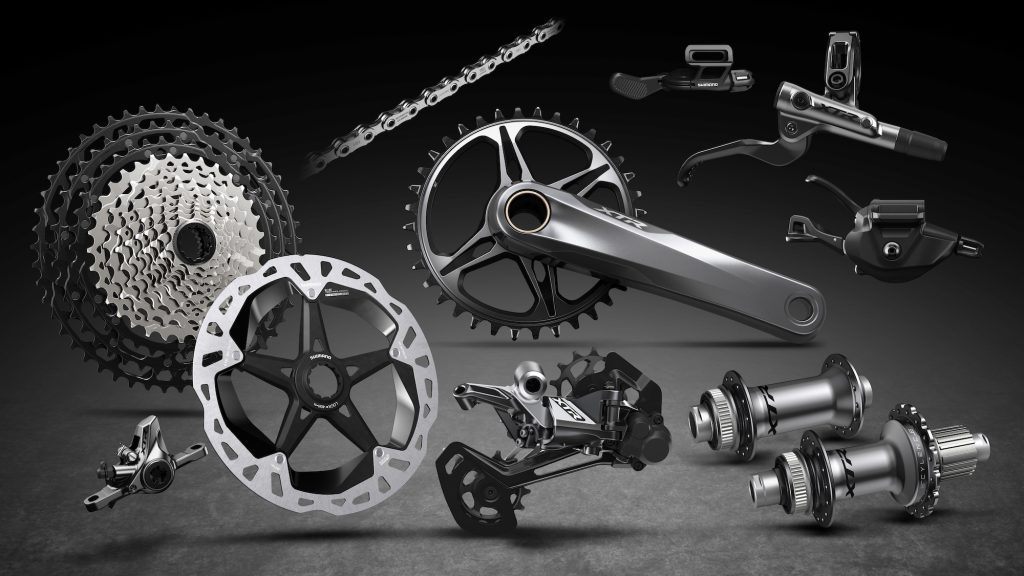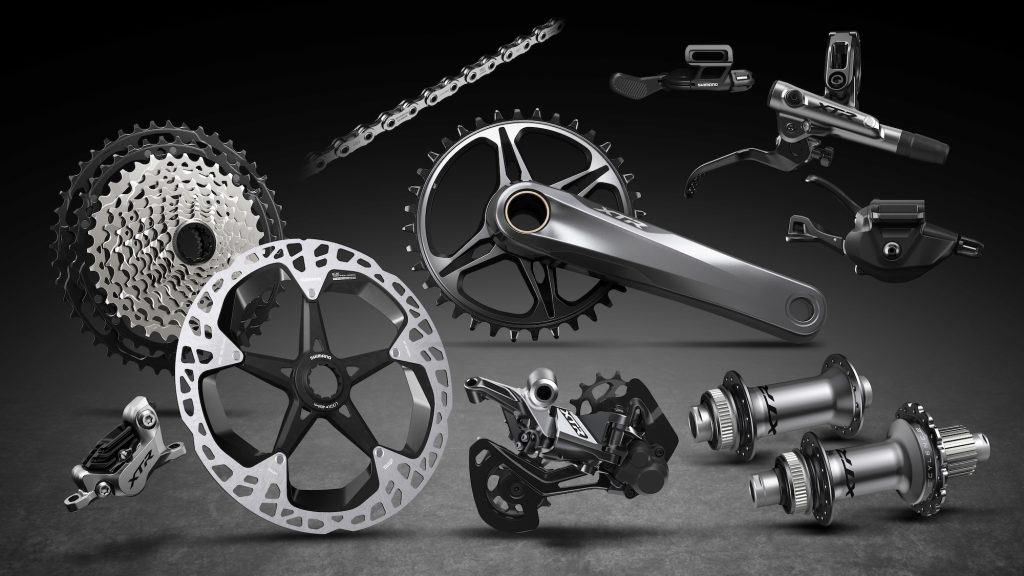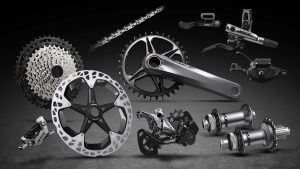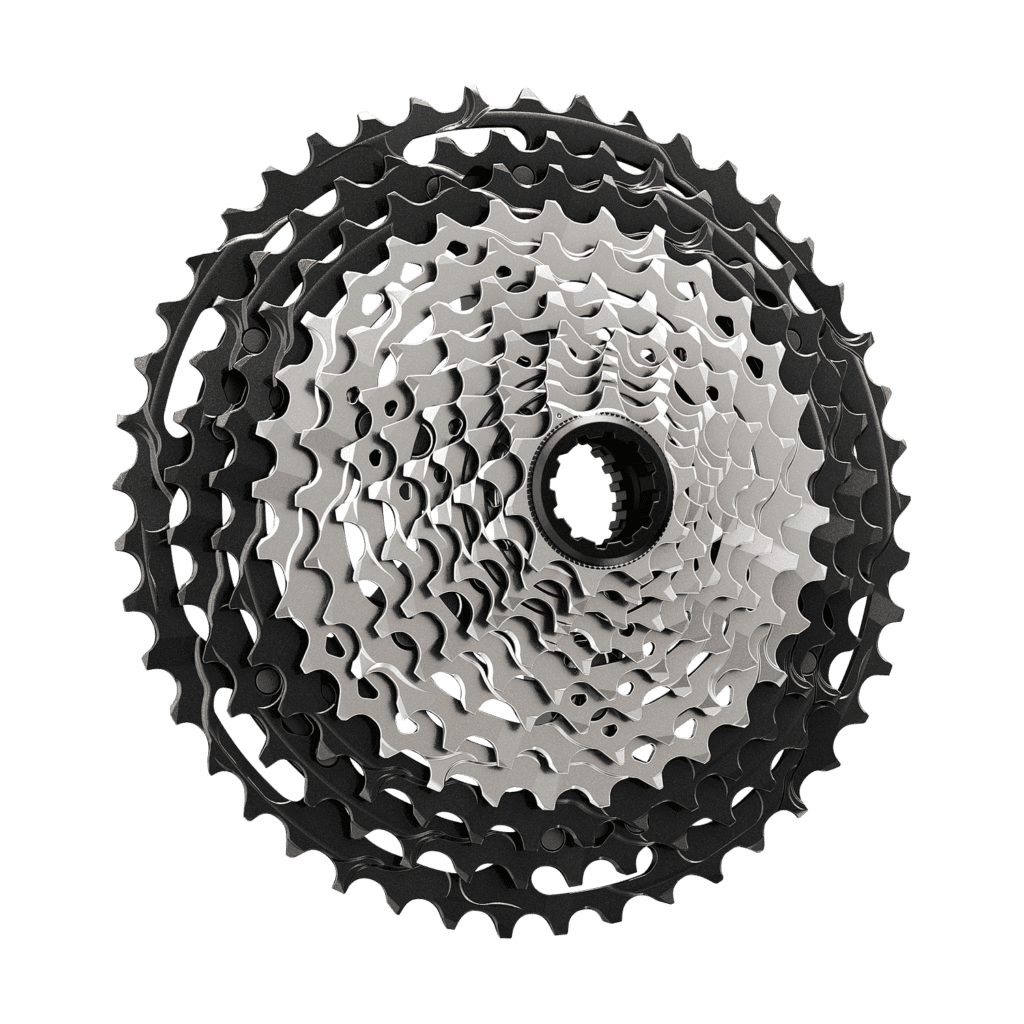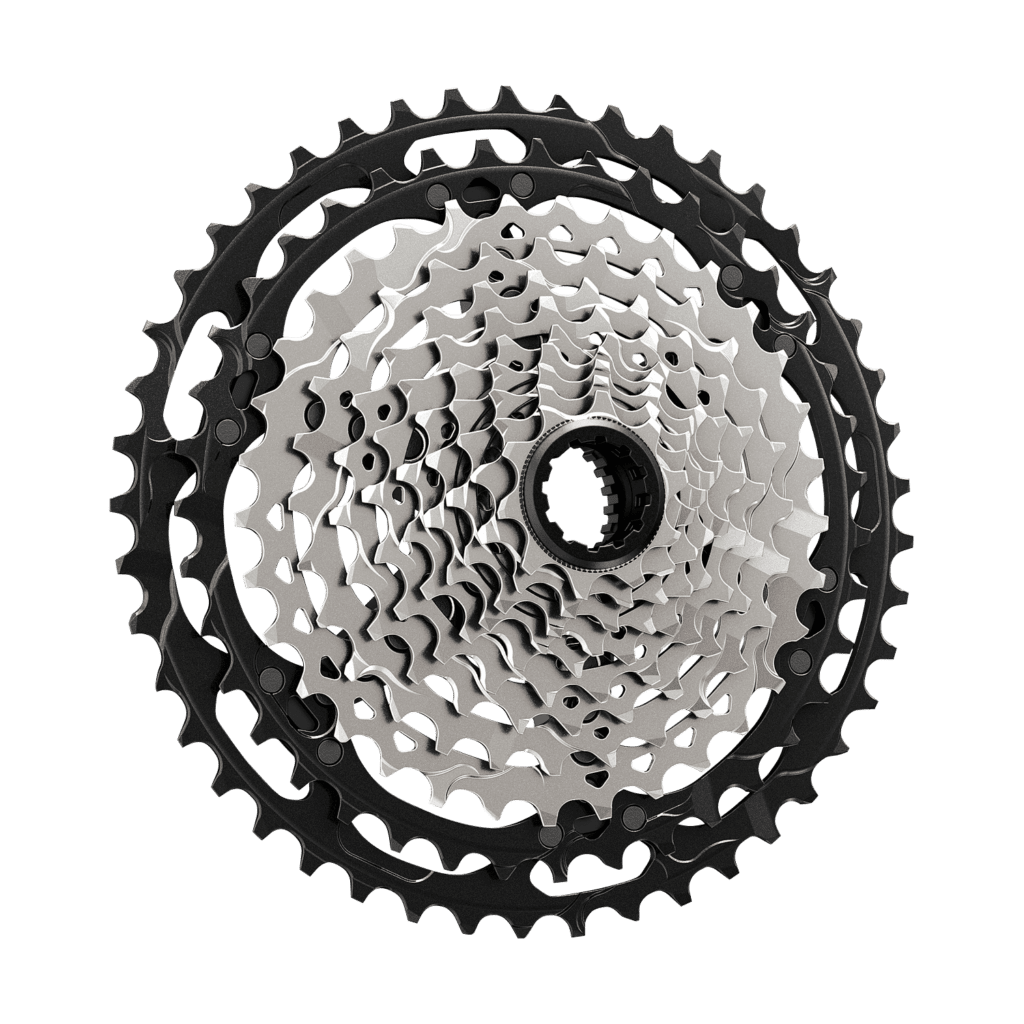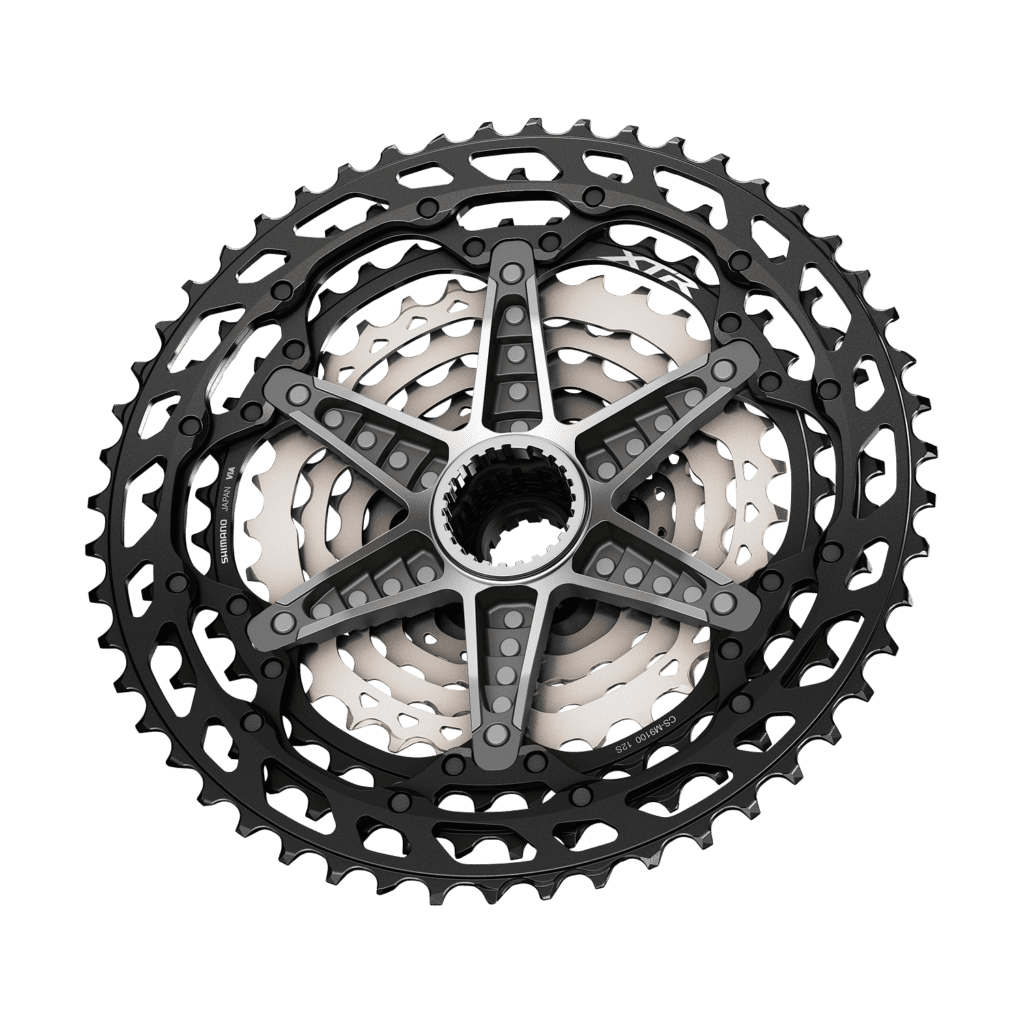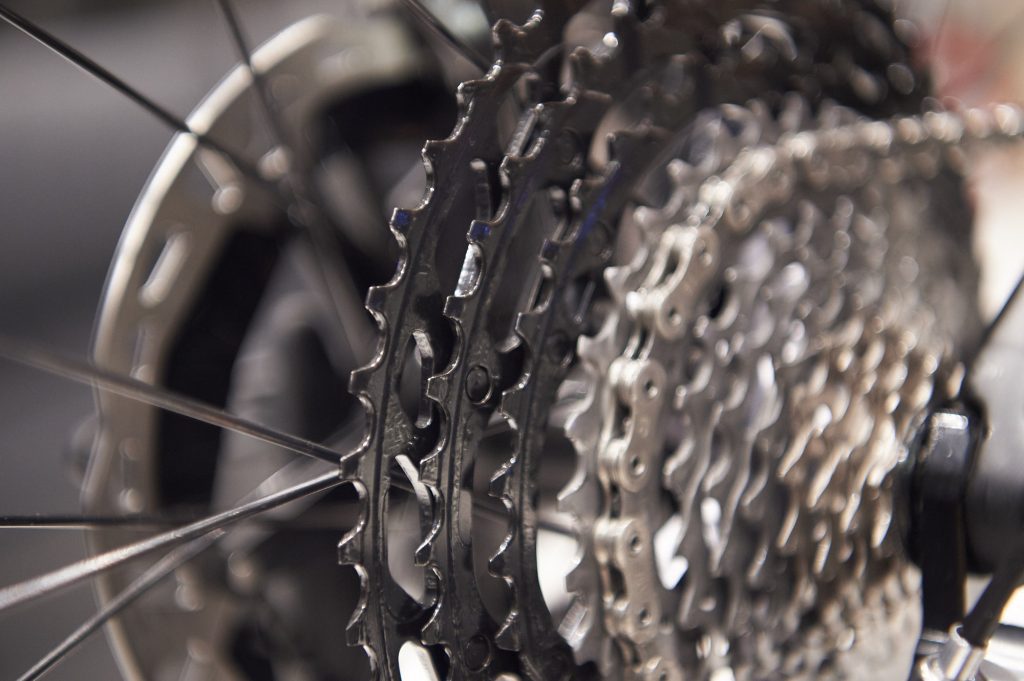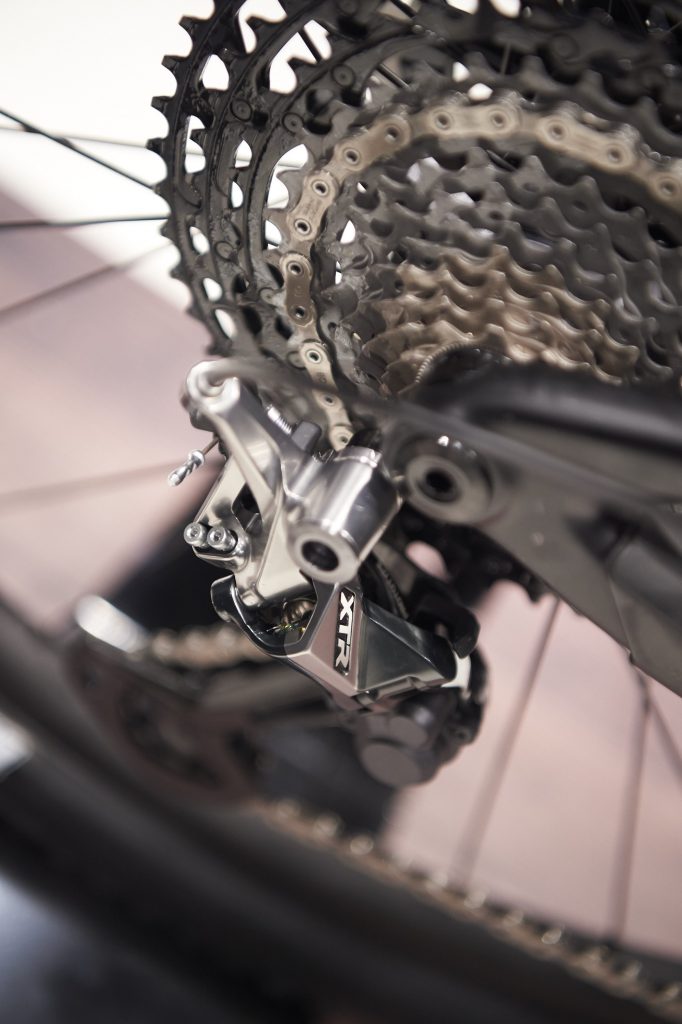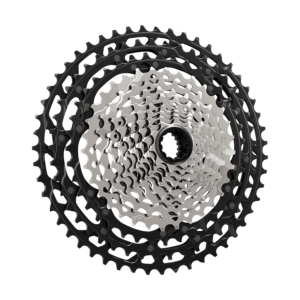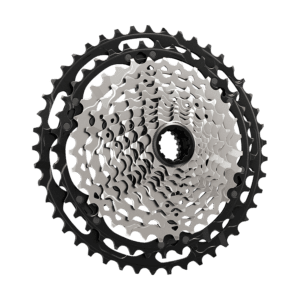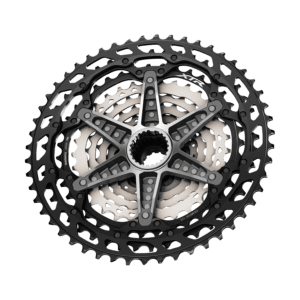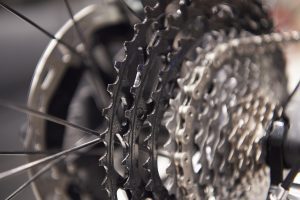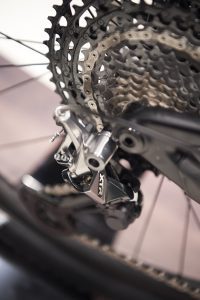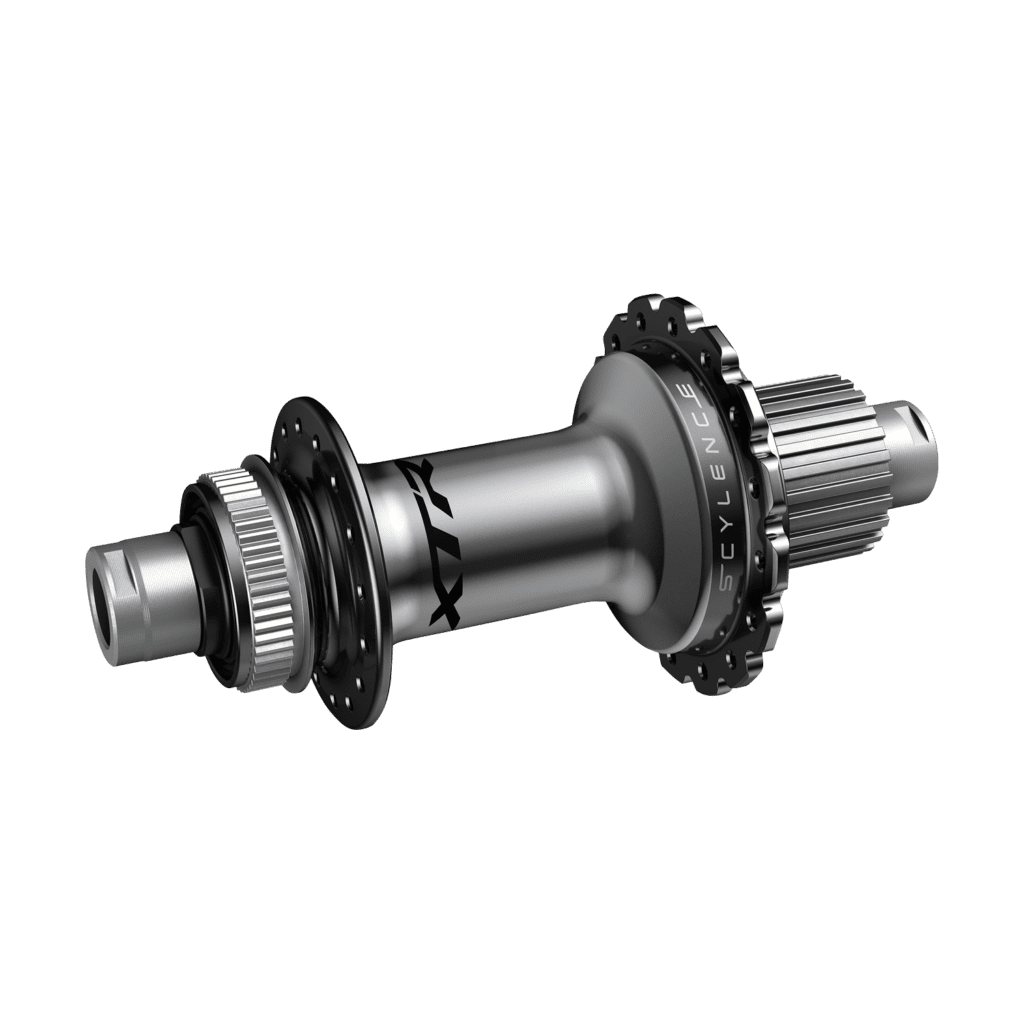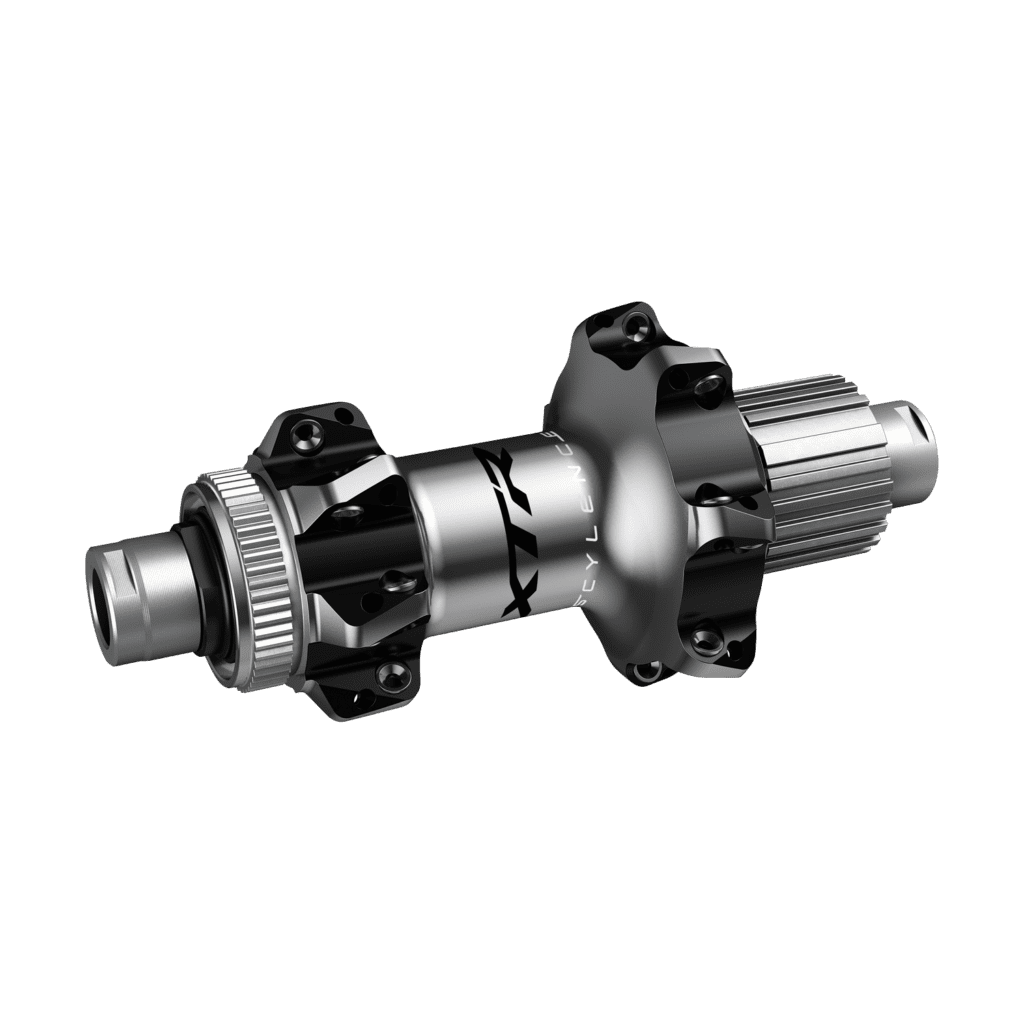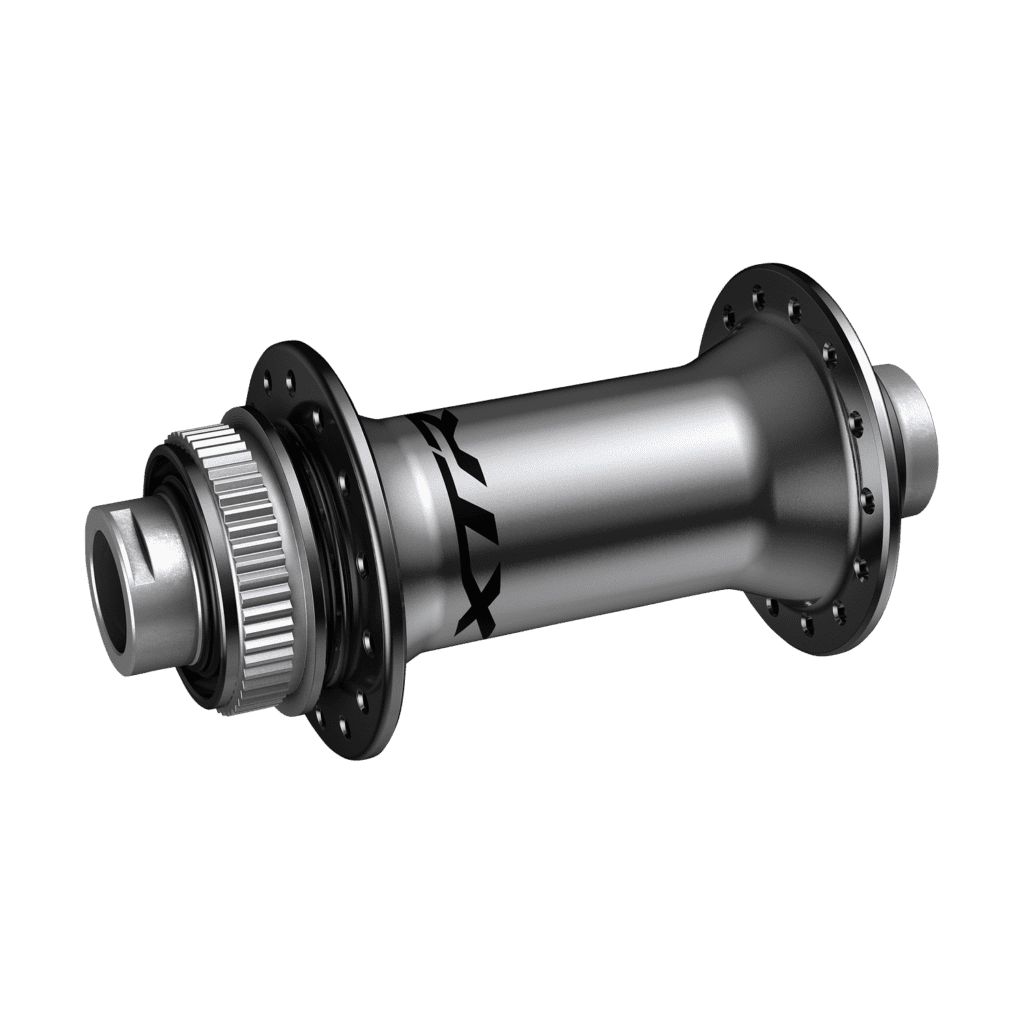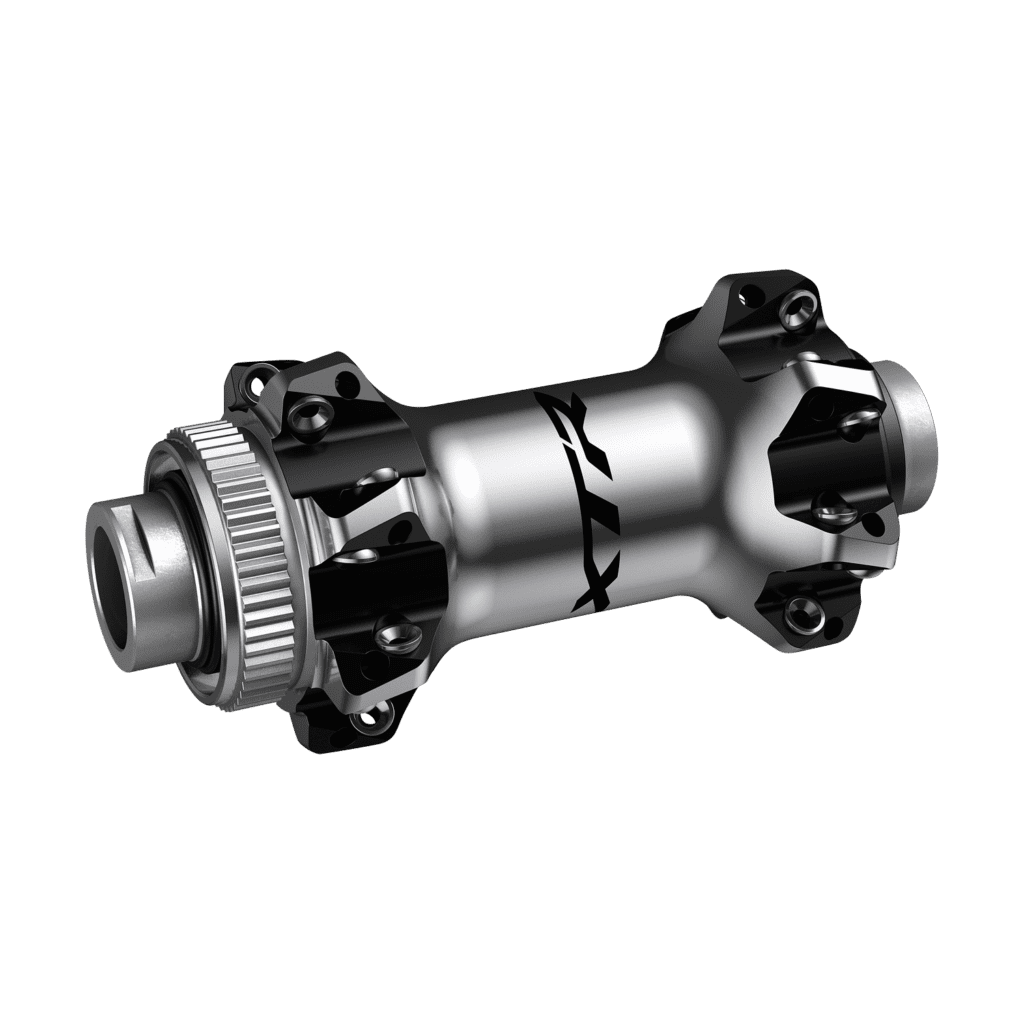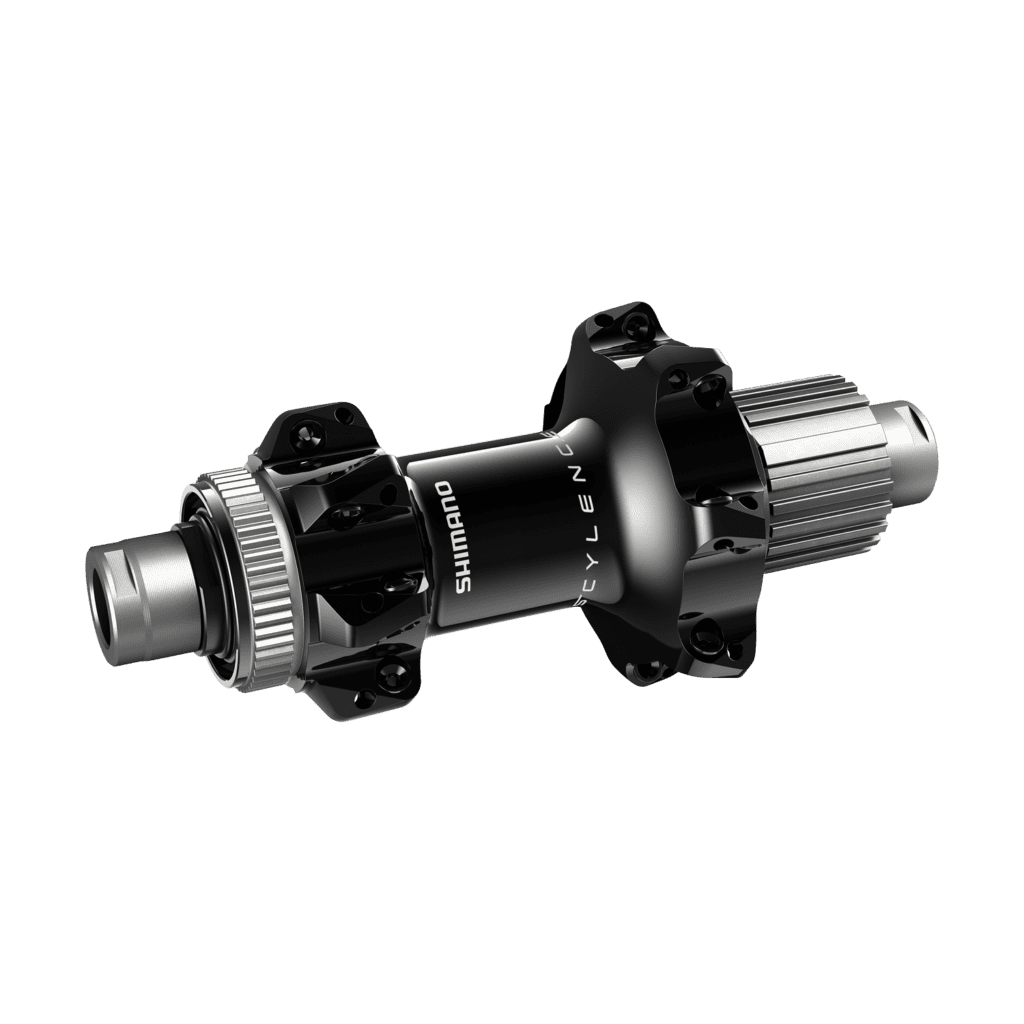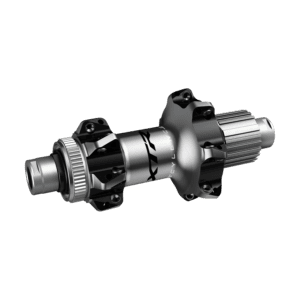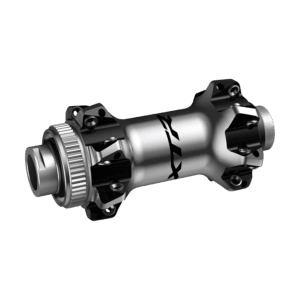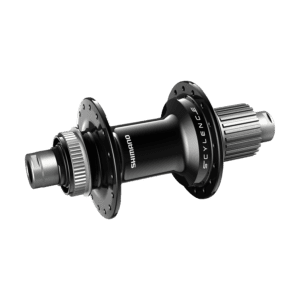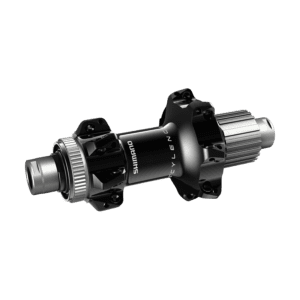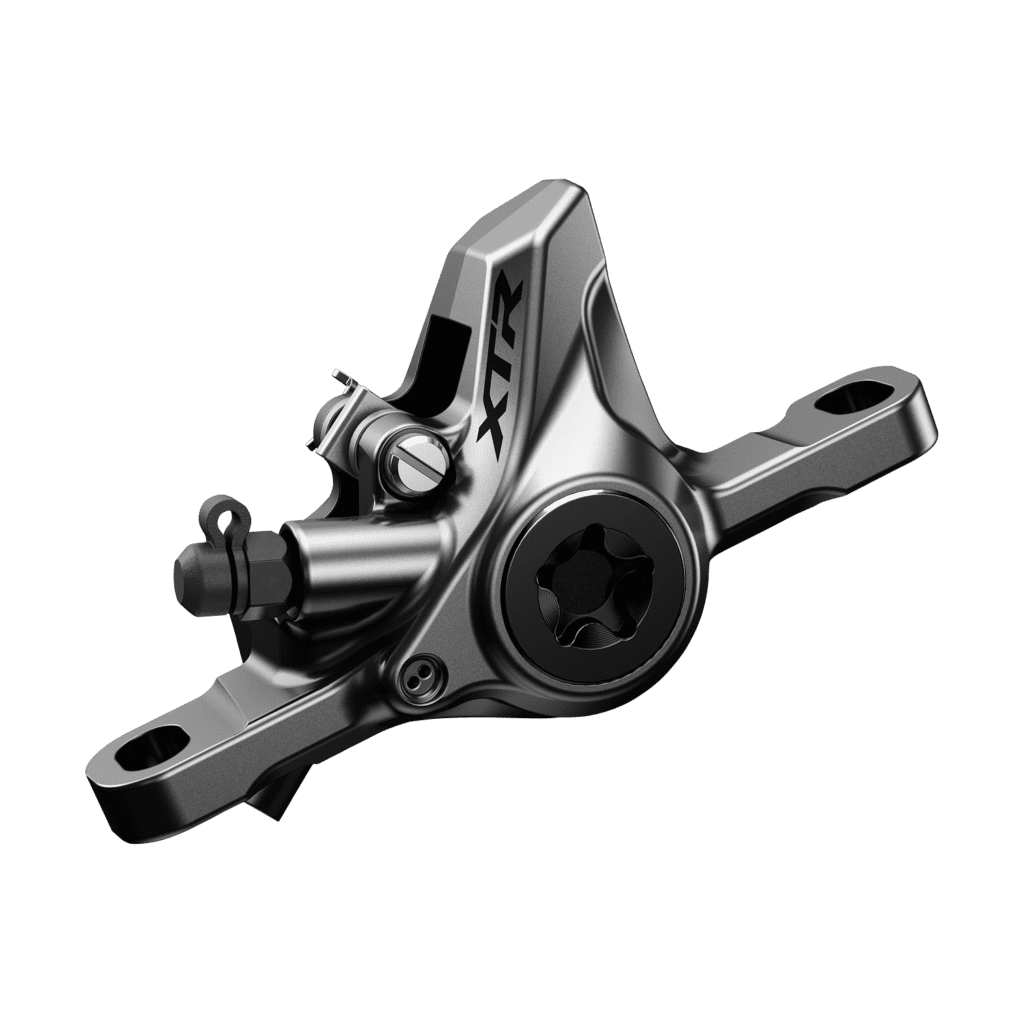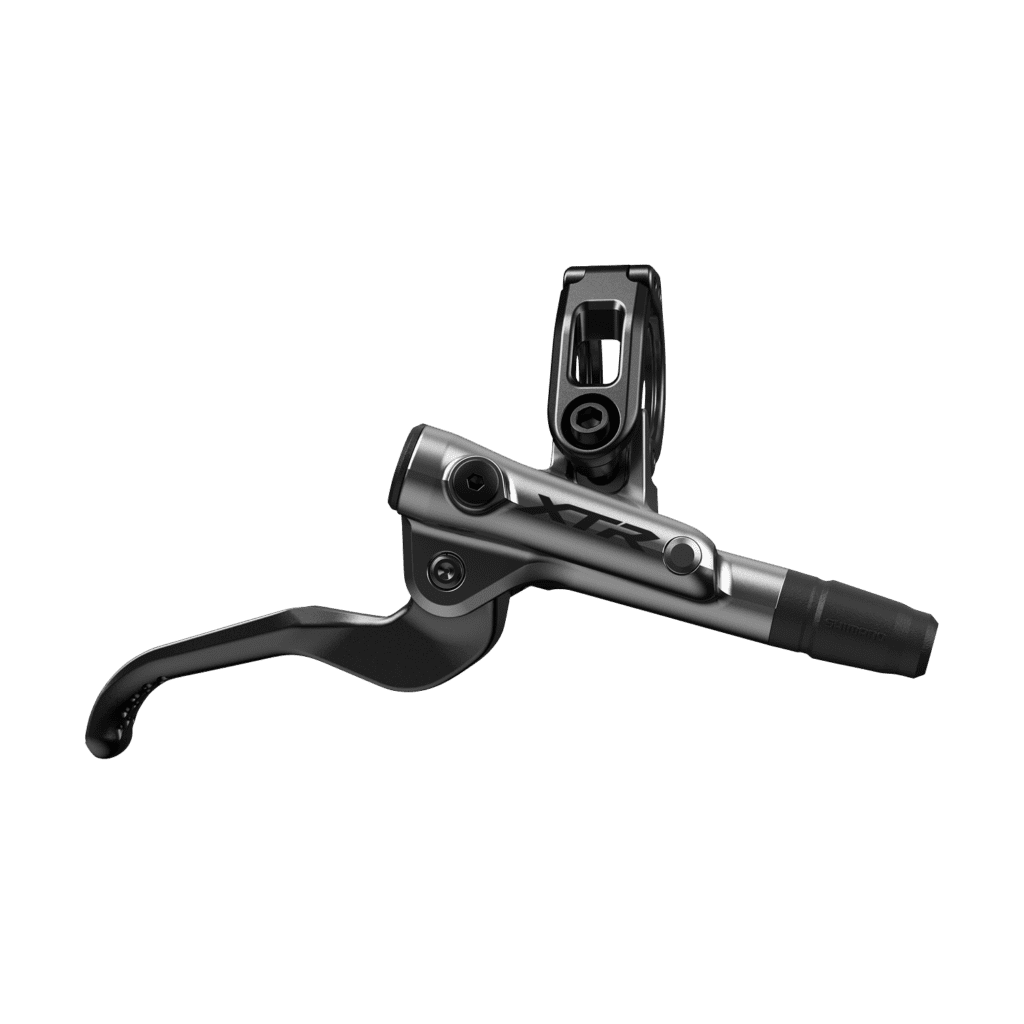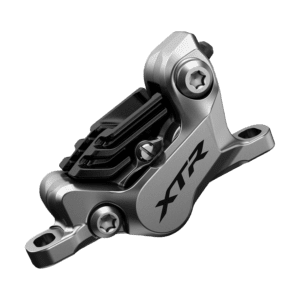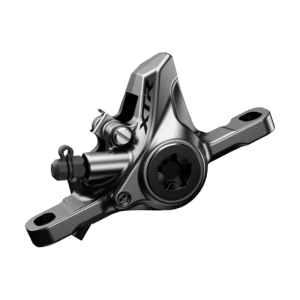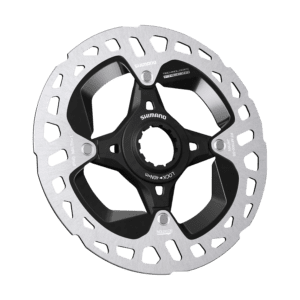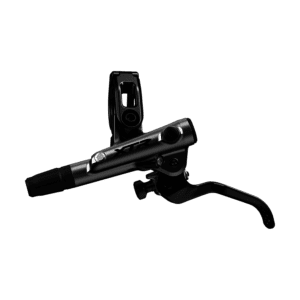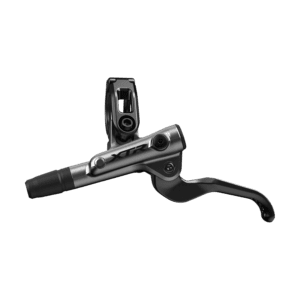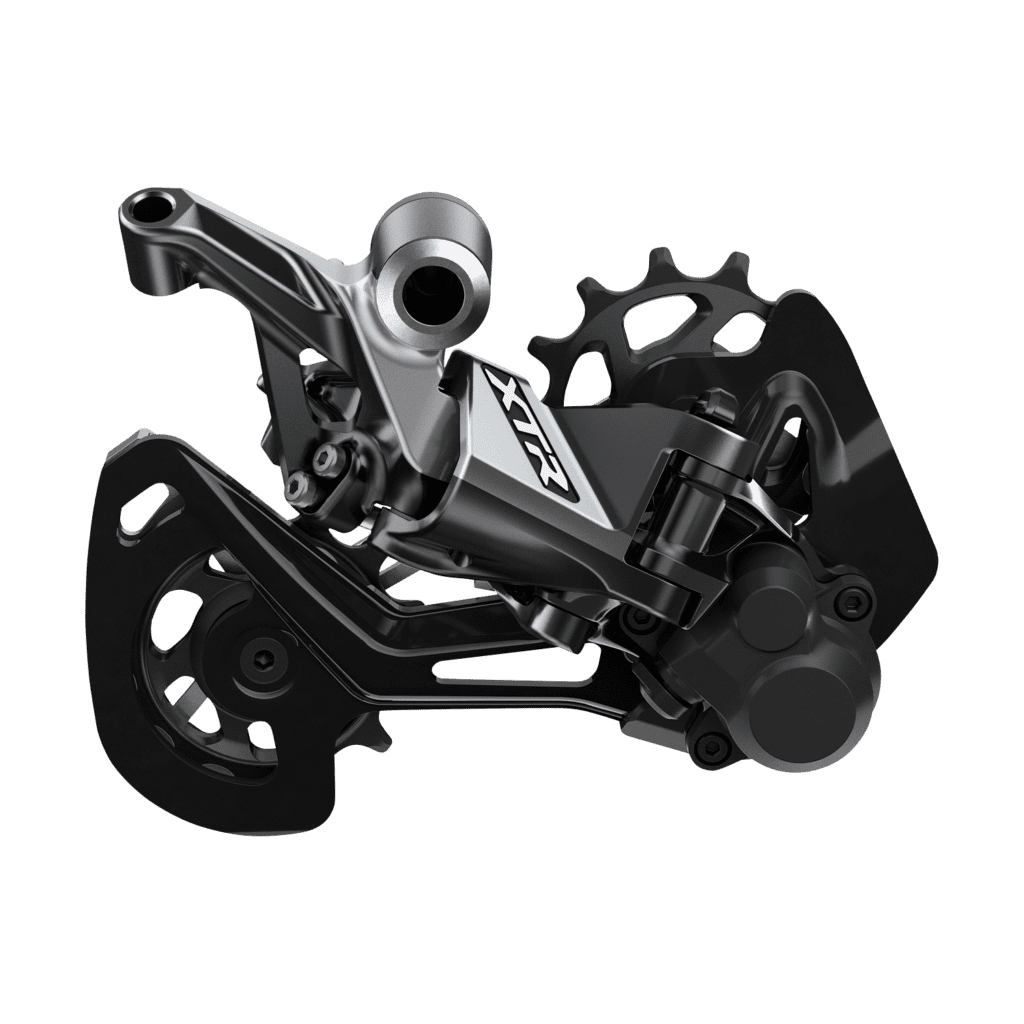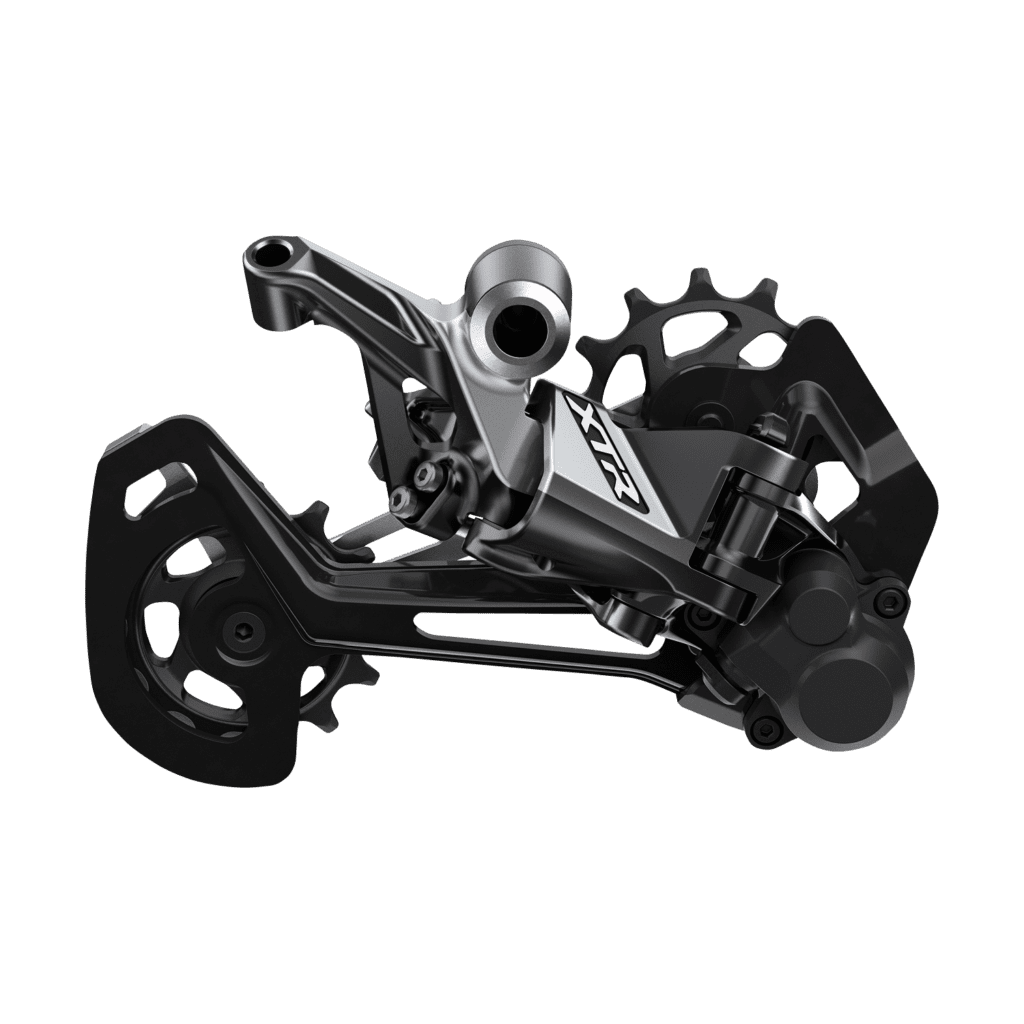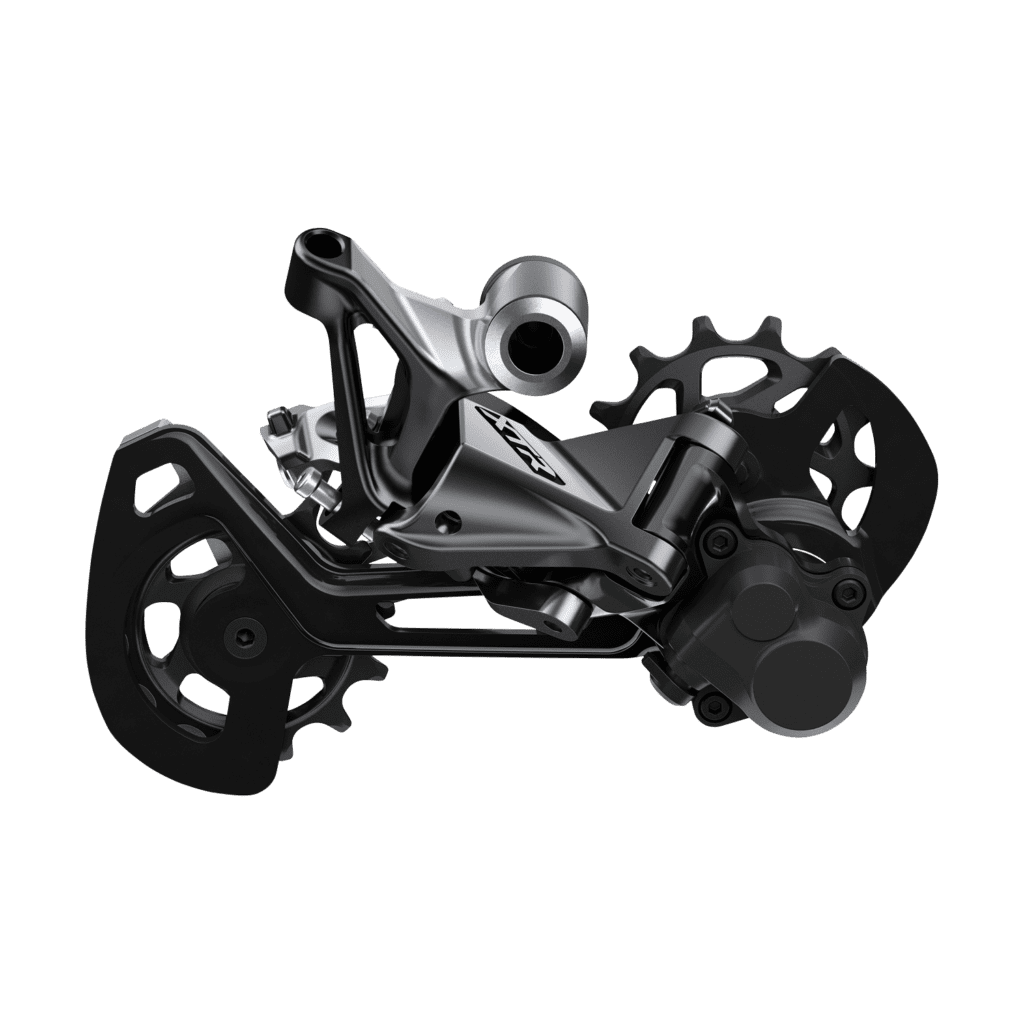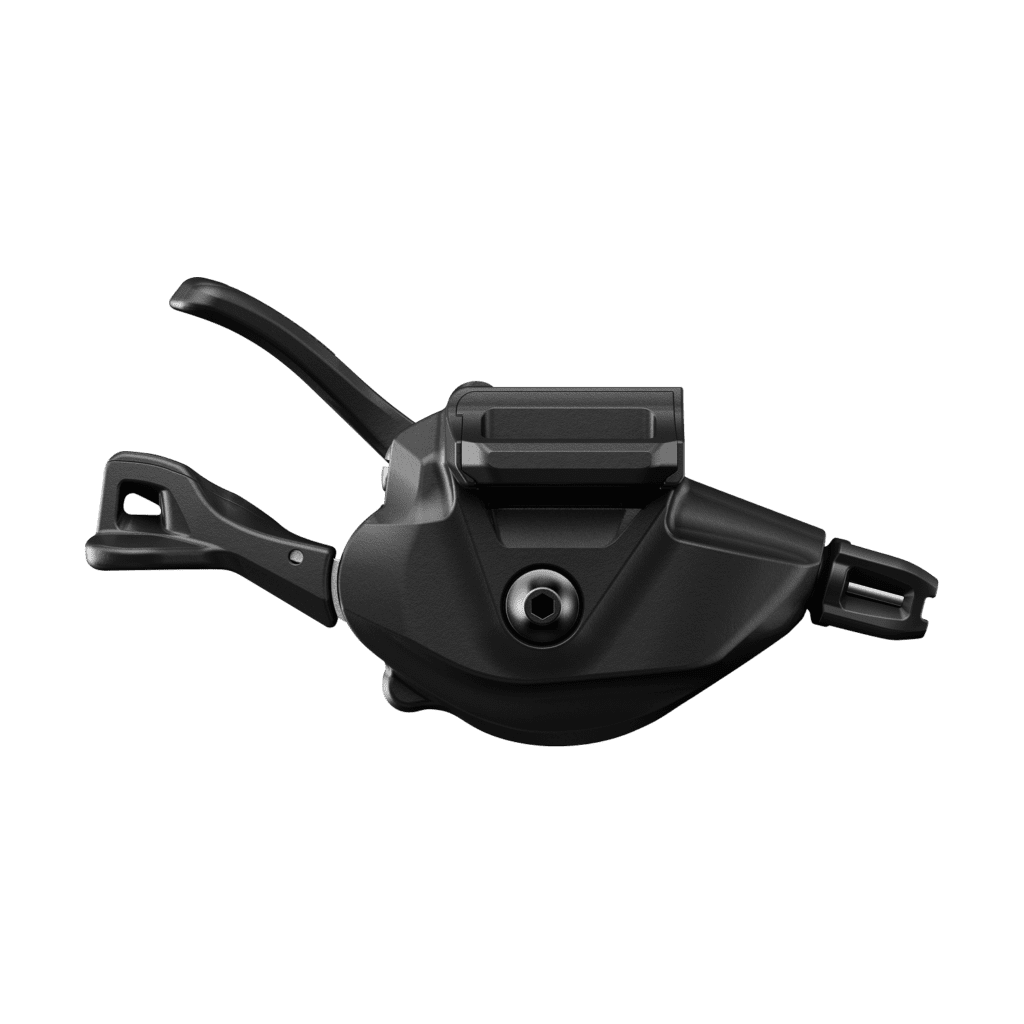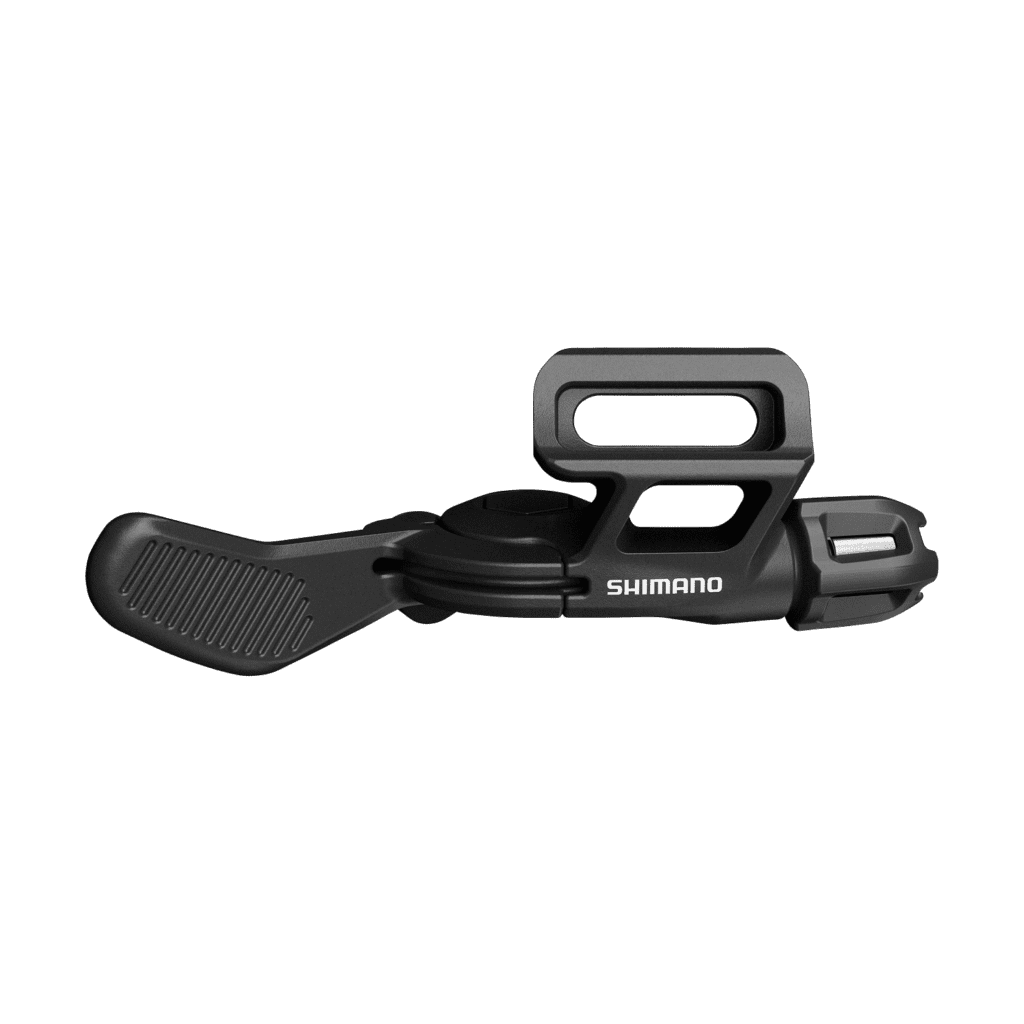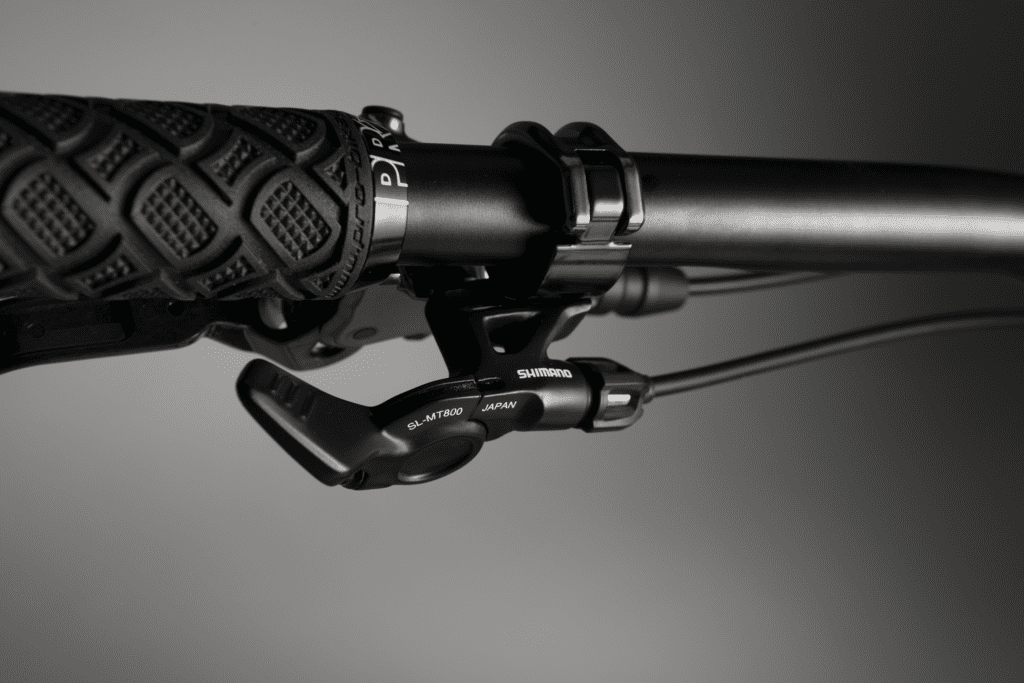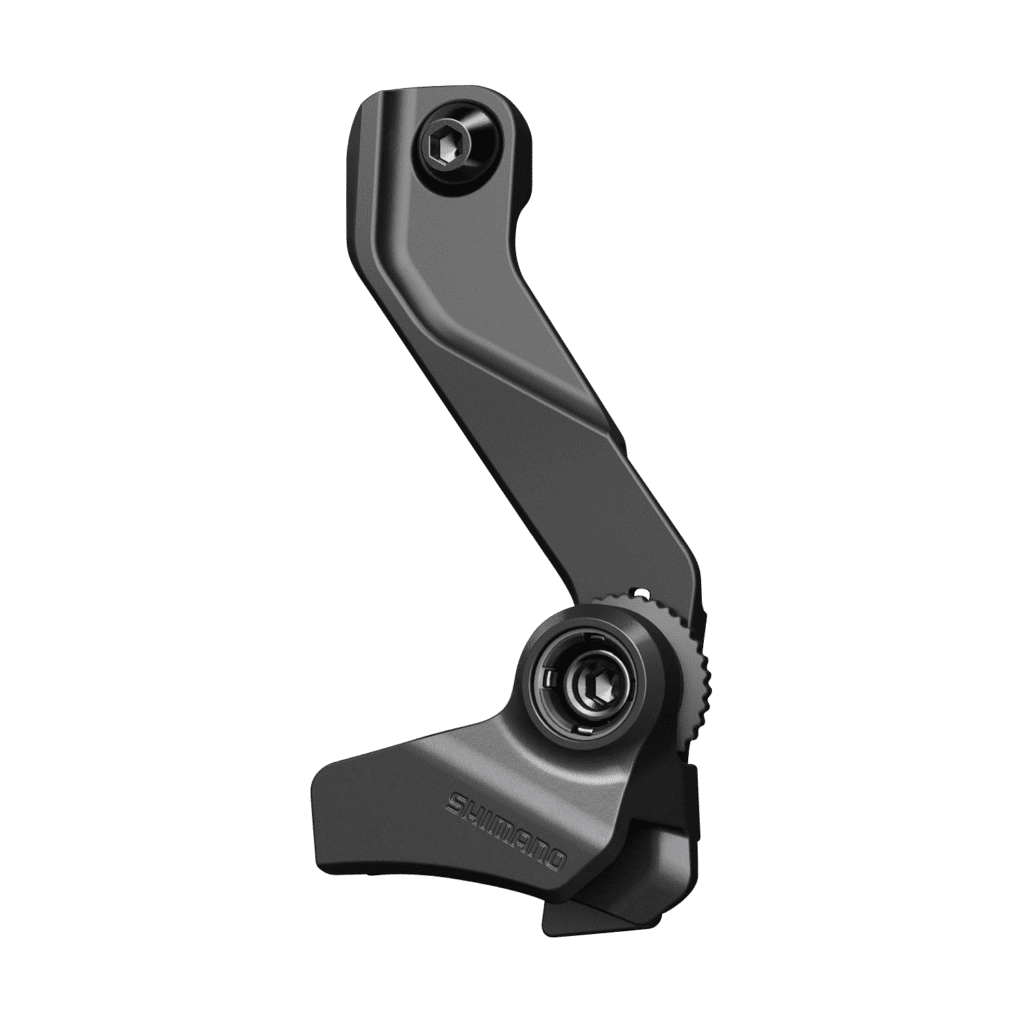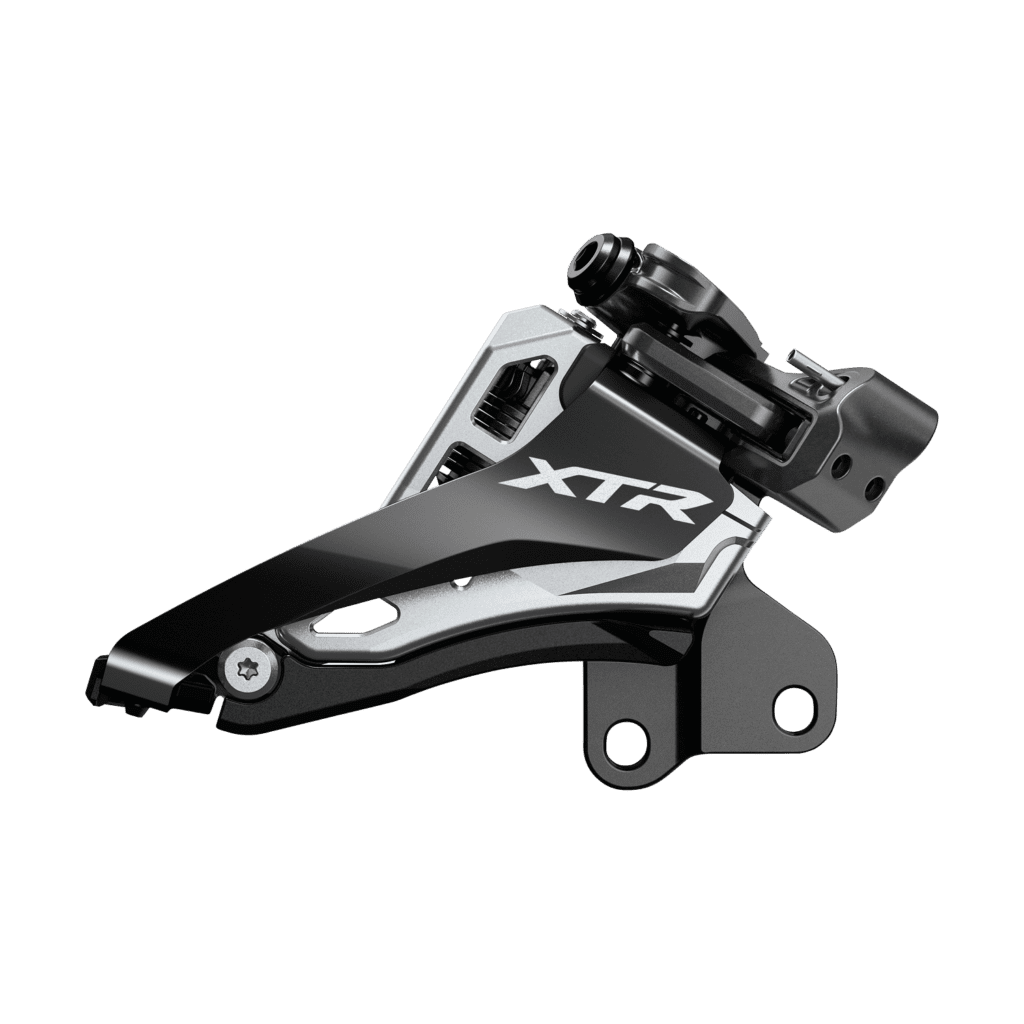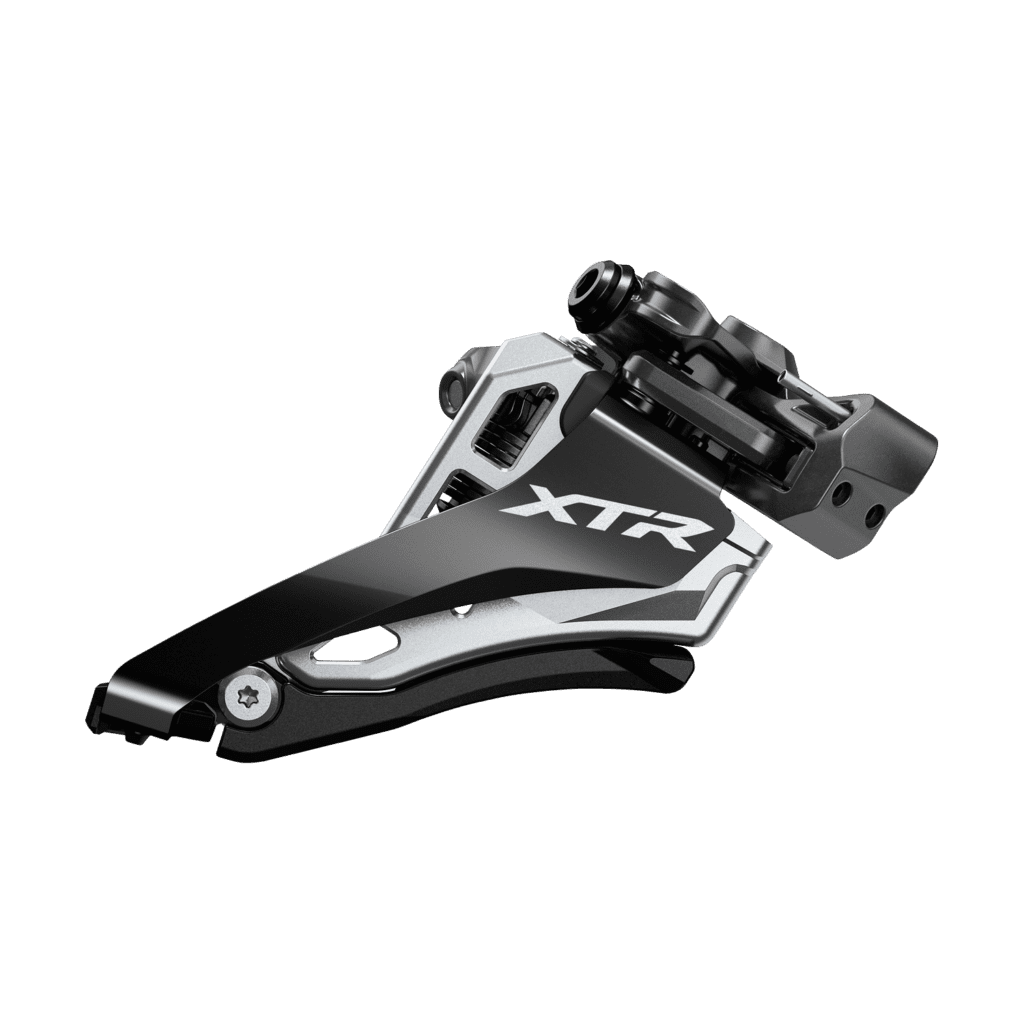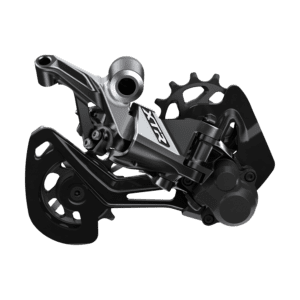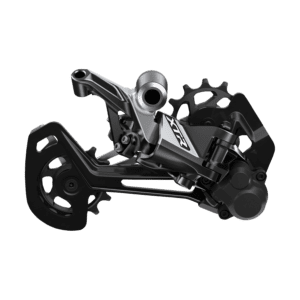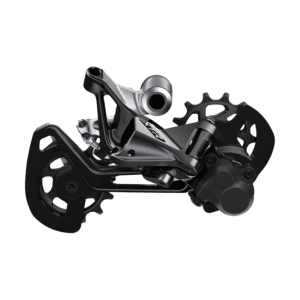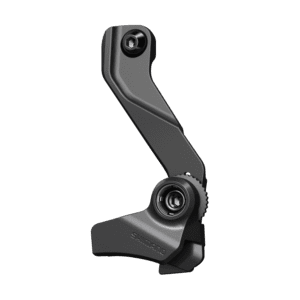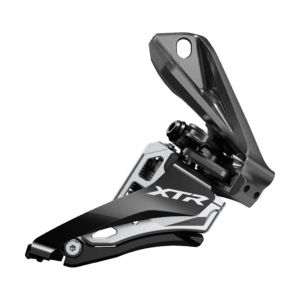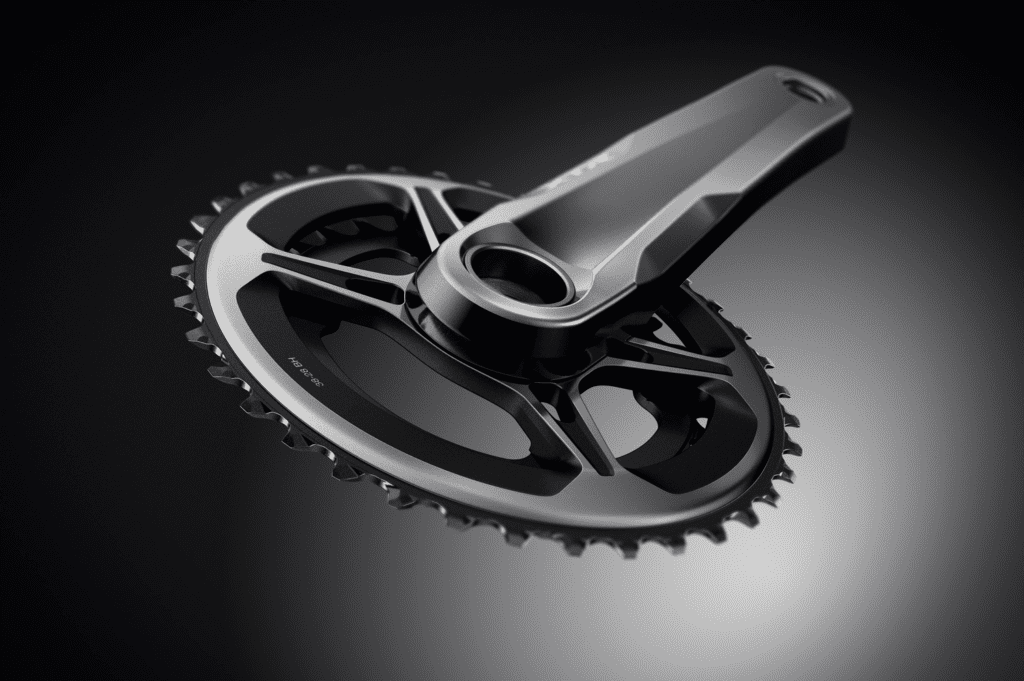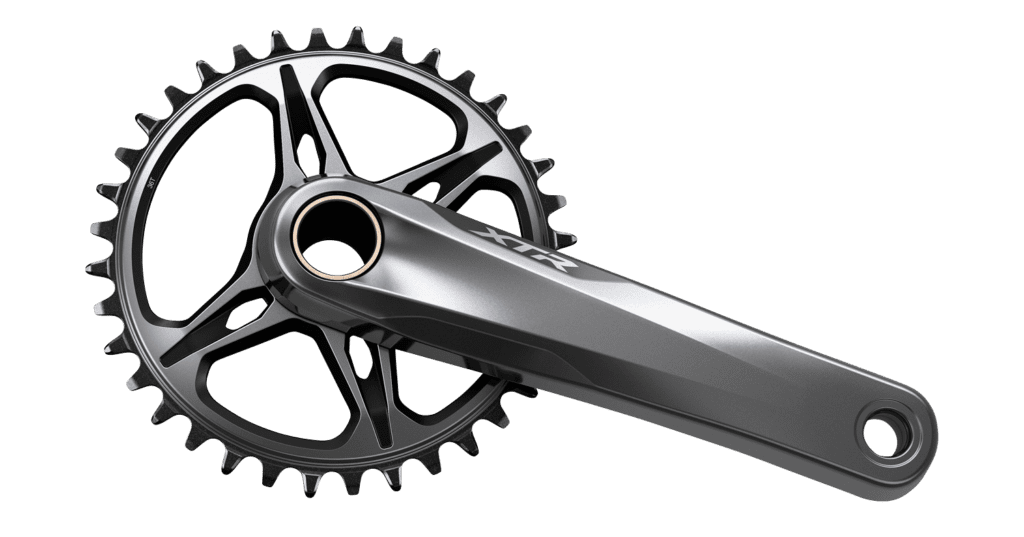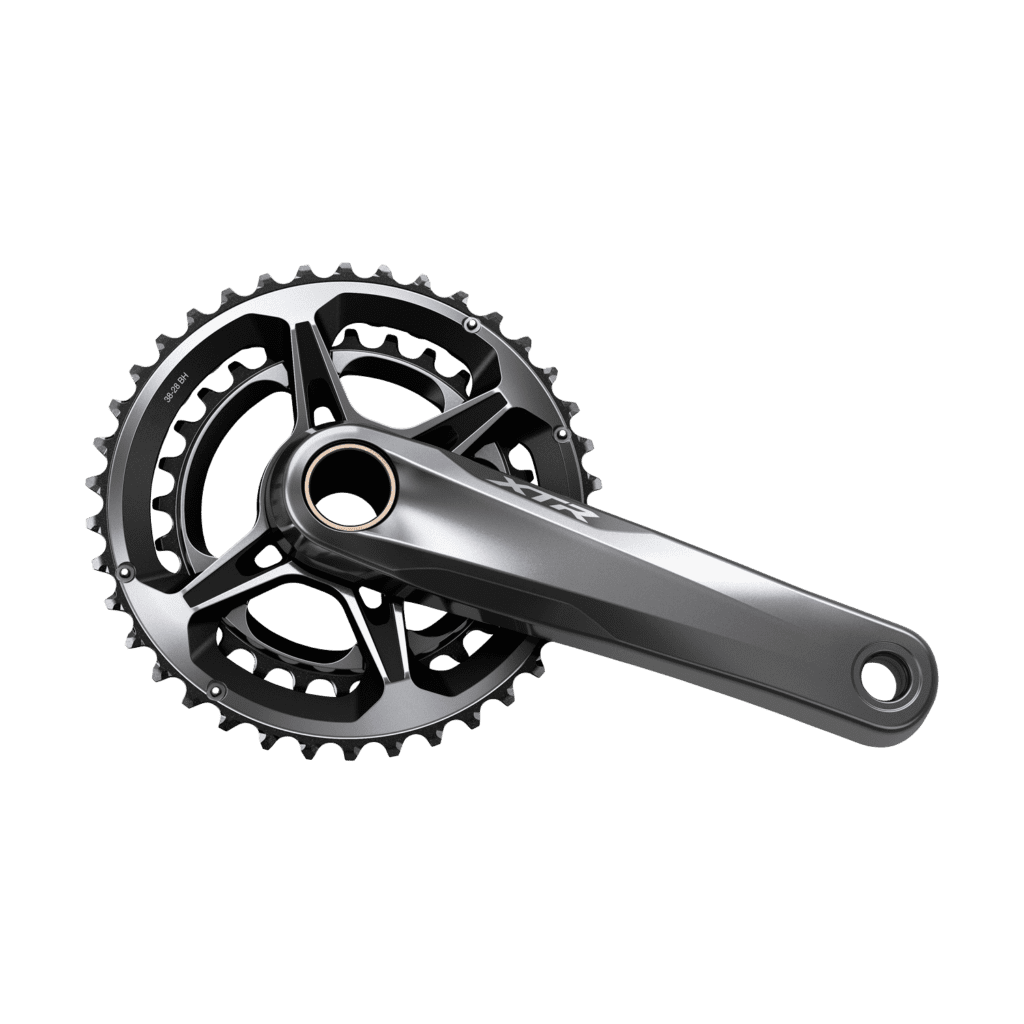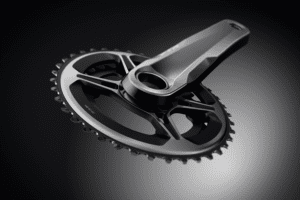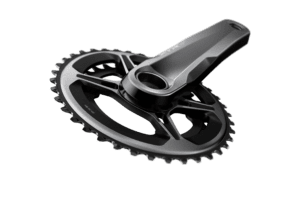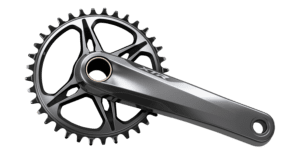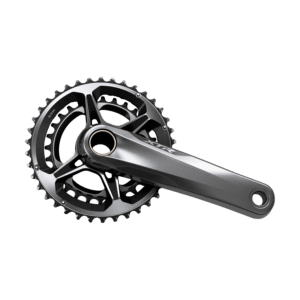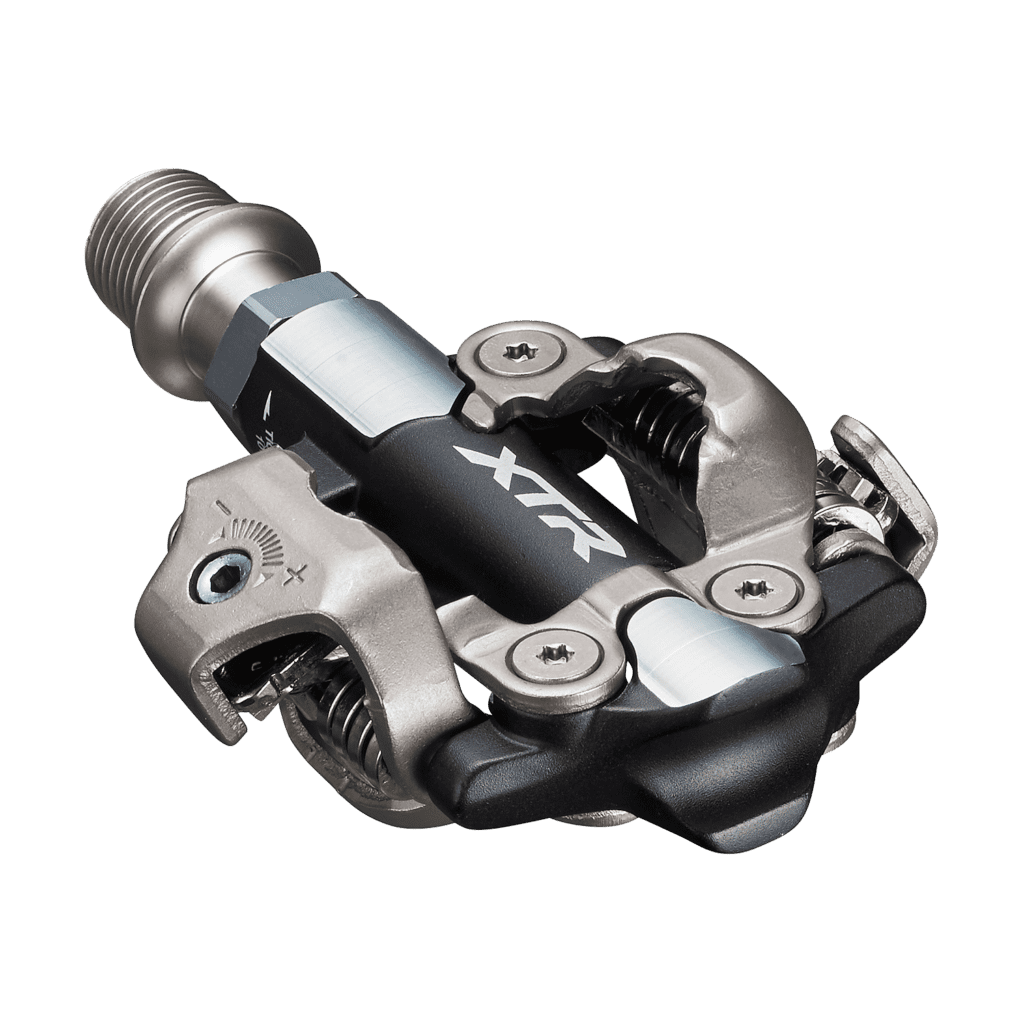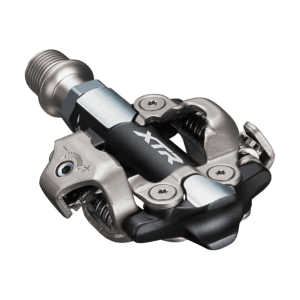Shimano launches 12-speed XTR group
Flaghship XTR group splits personality between XC and Enduro

Can one drivetrain be everything to everyone? Shimano certainly thinks so and, with the revamped 12-speed XTR 9100, hopes to prove that it’s possible without making sacrifices.
The new XTR isn’t exactly one drivetrain, though. While the flagship component group remains resolutely focused on racing, the Japanese manufacturer has included a range of possible parts combinations designed to broaden XTR’s appeal from its World Cup XC origins to the demands the Enduro World Series circuit.
While 12-speed has finally arrived in the Shimano catalogue, with a 10-51t cassette, high end 11-speed and 2x options aren’t disappearing to make room for the new arrival. Not just footnotes to 12-speed, Shimano retains the older drivetrain options because it thinks the technology is better suited to some uses than a wide range 12-speed option. There’s even a 2×12 speed XTR option for any rider seeking a wide range without losing shorter steps between gears.
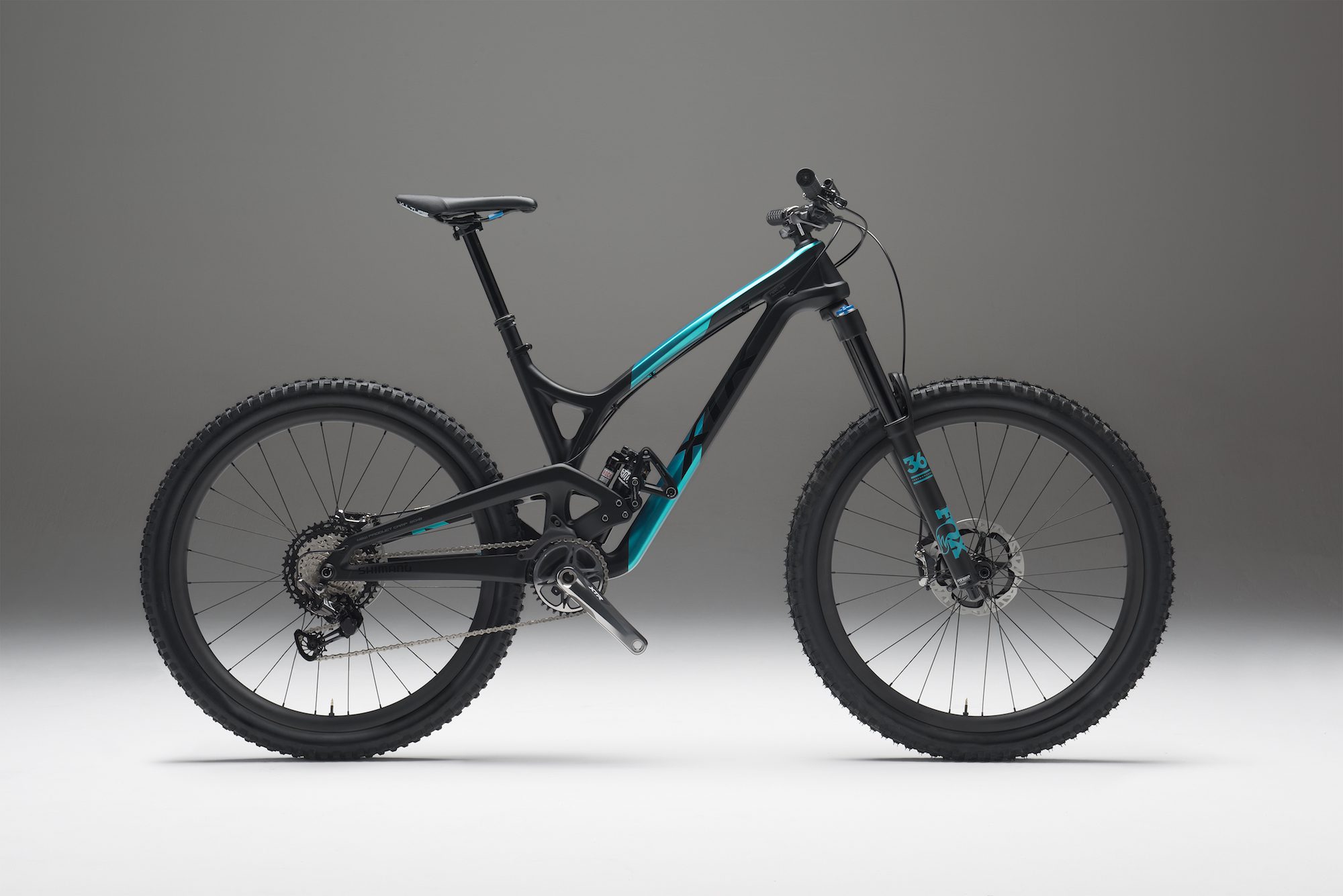
While Shimano’s stayed at the top end of XC racing, the new XTR is clearly targeting any enduro and trail riders that may have been lured away from the Japanese manufacturer by the promise of wide range 12-speed cassettes. There’s major changes in what Shimano offers in XTR that go beyond gear ranges, though, including a new four-piston brake caliper aimed squarely at bridging the gap between XTR and the downhill World Cup focused Saint series, updated trail pedals and even an XTR series chainguide.
One conspicuous absence from Shimano’s XTR launch is any sort of electronic shifting option. The lack of any Di2 offering is a little surprising, especially since the new parts have already been spotted on course during practice for this weekends Nové Mesto World Cup XCO, but it is highly unlikely that the ever cautious components corporation is looking to leap into the unofficially launched wireless mountain bike drivetrain race.
XTR 12-speed and 11-speed cassette options
There are three cassette options included in the new XTR: two highly anticipated 12-speed cassettes and a lightweight, race oriented 11-speed cassette. The 12-speed “Wide Range” cassette spans a 510% gear range over 10-51t, conspicuously one tooth bigger on the largest cog than Shimano’s main rival in the drivetrain game. Shimano also offers a 10-45t “Rhythm Step” cassette which still spans a 450% gear range, but with what Shimano claims are “more ideal” gear steps. The Rhythm Step cassette can also be used as part of a 2x system, for any rider seeking the best of both range and gear steps.
Shimano includes an 11-speed cassette in XTR, which it uses as the centerpiece of a lightweight drivetrain. The 10-45t 11-speed cassette is 57 g lighter than the 12-speed 10-51t cassette, but reduces overall drivetrain weight by 76 grams when you factor in the use of a short cage derailleur (3 g), a shorter chain (13 g), and wide flange (M9125-B) hub (3 g).
The new XTR cassettes use a new Beam Spider construction, combining titanium, aluminum and steel for an optimal blend of strength, weight and durability.
MSRP for M9100 12-speed cassettes is $500 while the M9110 11-speed cassette is $430
Micro Spline and Scylence XTR hubs
Moving to a 10t cog on for XTR required reworking the existing M9000 hub system into the new Micro Spline freehub system. Smaller freehub splines are intended to eliminate damage on the lightweight aluminum freehub.
For those of you who would rather hear your tires on the trail than the deafening freewheel sound that has become en vogue with high end hubs, Shimano’s Scylence hubs are constructed of two driver plates that completely disengage when you stop pedaling making coasting, as the name might suggest, completely silent, while still providing quick, 7.6-degree engagement.
Shimano have added a variety of hub options for XTR including straight pull versions as well as more affordable non-series hup options. The standard XTR hub is available in Boost and non-Boost spacing, while all other XTR and non-series hubs are Boost only.
For the weight conscious XC racer, there’s a wide flange rear hub option that creates a stronger wheel through more balanced spoke tension and wider spoke bracing, while reducing weight. The wide flange (M9125-B) is available in 28 and 32 hole options, but only works with the lightweight 11-speed XTR cassette.
MSRP on XTR and non-series front hubs runs from $90 – $250 and rear hubs run from $240 – $440
XTR XC and enduro brakes
Looking to bridge the gap between XTR and Saint without losing its edge in the weight conscious XC category, Shimano has divided XTR into two different brake systems. The two-piston XTR XC (M9100) claims a weight saving of 26 grams over the previous M9000 series braking system, including rotors, while still improving rigidity for better bike control by moving the brake clamp position inboard. The XC oriented system uses 140 mm and 160 mm Ice-Tech Freeza rotors optimized for weight reduction.
New for 2018 is a four-piston XTR (M9120) brake caliper which Shimano has added as an enduro-specific option. Shimano claims the four-piston caliper has the same brake power rating as its Saint (M820) brakes, but with greater modulation tuned specifically for the demands of enduro racing. The enduro caliper is designed for use with Ice-Tech Freeza rotors in 180 mm and 203 mm rotor sizes, which have been optimized for heat-dissipation, and the four-piston M9120 caliper is compatible with the finned XTR pads or Saint brake pads.
MSRP for a full M9100 brake system is $390, while M9120 comes in at $430
XTR derailleurs
Moving to 12-speed wide range cassette required a new XTR derailleur offering, which was made more complicated by Shimano’s decision to retain 11-speed and 2x drivetrain options. There’s now three different XTR derailleurs, optimized for the different set-up options. RD-M9100 SGS is a long cage derailleur optimized for the wide range 10-51 cassette, while RD-M9120-GS is optimized for 2x set-ups, but has a max 45t cog size. The most interesting to some riders might be the RD-M9100-GS, which is compatible with 11-speed and 12-speed 10-45 cassettes, features a short cage that has 28 mm more ground clearance, but a max 45t cog size.
Shimano keeps it’s trail proven Shadow RD+ low profile technology, and adds larger 13t pulley wheels for more efficient rolling.
XTR’s Rapidfire Plus rear shift levers get upgraded mounting flexibility, with the new I-Spec EV design allowing a 14 mm slide range and 60-degree rotation so you can get the paddles exactly where you want them. The front derailleur gets a full redesign, with the new 2-way release shifter that allows riders to shift up and down between front chainrings with a single lever.
Shimano has also added it’s own dropper post remote to the XTR series, which is claims has a lighter feel than other options. The I-Spec EV compatible lever is compatible with most cable actuated posts since the cable clamps at the lever end.
MSRP for all three new derailleurs is $340, while the new XTR front derailleur runs at $160
Hollowtech II cranks and Hyperglide+ chain
Shimano moves the Hollowtech II cranks to a direct mount chainring system for the new XTR, and offers a single chainring set-up in two different Q-factor options (162 mm or 168 mm). Chainrings, which feature Shimano’s new Hyperglide+ tooth design of alternating chainring toot size, will be available in two tooth jumps from 30t to 38t. The double chainring set-up also comes in both Q-factor options, uses a direct mount system, and can be used as a 1x or 2x set-up. Direct mount 2x XTR will only be offered in a 38/28t combination.
The XTR HG chain has been updated with an extended inner link plate designed to work with the new Hyperglide+ cassette and chainring tooth designs, and is only available in a quick-link option.
MSRP for crank and chainring/chainrings is $770
XTR M9100 XC and M9120 Trail/Enduro pedals
Both the XC and Trail pedal get small, but important updates in the new XTR range to keep them at the top of the pedal pile. M9100 XC pedals now come in two axle lengths, to keep riders Q-factor optimized on Boost drivetrains. The shorter axle also matches the Q-factor of Shimano’s SPD-SL road pedals, for road riders looking for a seamless transition to gravel racing.
M9120 Trail/Enduro pedal gets a wider contact area than the previous M9020 pedal, which has been expanded rearwards to provide more support when descending and to fit better with the flat sole style clipless trail shoe designs. Shimano also include a 1 mm cleat spacer to ensure the M9120 works with a wider range of shoes.
MSRP for all XTR pedals is $200
